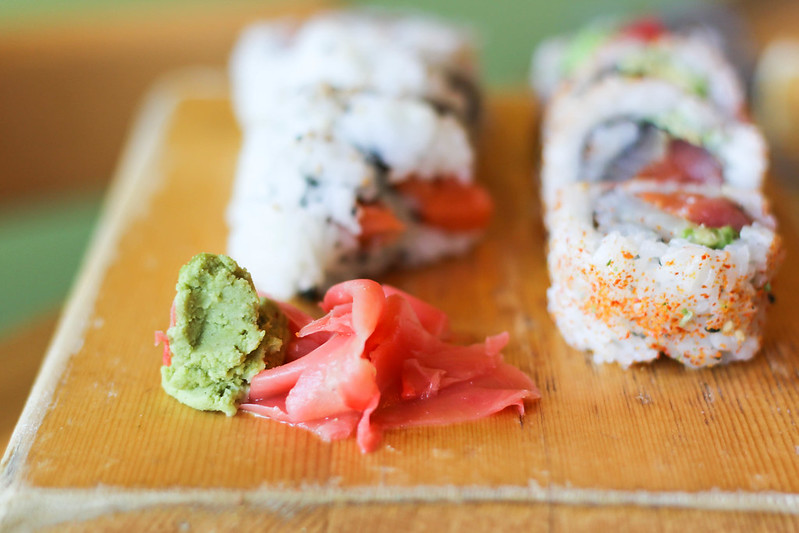So what really is that green mash next to your California roll and salmon sashimi that sends a hot zing up your taste buds and nostrils?
Wasabi comes from the root-like stem of Wasabia japonica. The plant is in the same family as cabbage, cauliflower and broccoli. It’s difficult to cultivate, and as a result is largely grown only in areas of Japan, China, New Zealand and small areas of the United States.
But what you stir into your soy sauce at most Japanese restaurants is probably not Wasabia japonica—it’s most likely what is commonly referred to as “western wasabi” by our Japanese counterparts. Since true wasabi is extremely expensive outside of Japan and difficult to grow, it’s more likely a combination of horseradish, starch, mustard and food coloring. (Surprise!)
Only high-end restaurants and specialty stores typically carry true wasabi. Real wasabi is typically grated upon order and loses its flavor and hotness after 15 minutes. By contrast, imitation wasabi looks like a lump of paste (and in some cases, almost like putty), can be kept overnight and will not lose its zing. Although it isn’t authentic, it still tastes really good, so feel free to continue using it as a flavor enhancer for your favorite foods!
More Good Stuff: (yes, that you can eat with wasabi)
Deconstructed sushi
Sushi 101
DIY Candy Sushi (maybe no wasabi with this one)




